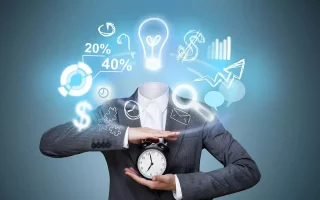Tax preparation can be a time-consuming and error-prone process, but with the help of advanced technologies such as artificial intelligence, this task can be made much easier and more efficient.
ChatGPT is a large language model trained by OpenAI that can assist in tax preparation and help eliminate human error.
In this blog post, we’ll explore how ChatGPT can be used to streamline the tax preparation process and save time.
What is ChatGPT?
ChatGPT is a language model developed by OpenAI that uses deep learning algorithms to generate human-like responses to natural language queries. It’s designed to be highly versatile and can be used for a wide range of applications, including customer service, chatbots, and language translation.
It’s trained on a massive amount of data from the internet, including text from websites, books, and other sources. This allows it to understand the nuances of language and generate responses that are both accurate and natural-sounding.
How can ChatGPT be used for Tax Preparation?
Tax preparation is a complex and time-consuming task that requires a high level of accuracy. By using ChatGPT, tax professionals can automate certain aspects of the process and eliminate the risk of human error.
Here are some ways in which ChatGPT can be used for tax preparation:
-
Answering Tax-Related Questions
One of the most time-consuming aspects of tax preparation is answering questions from clients.
ChatGPT can be used to create a chatbot that can respond to common tax-related questions, like “What deductions am I eligible for?” or “What is the tax rate for my state?”
By using ChatGPT to create a tax chatbot, tax professionals can free up their time to focus on more complex tasks, while also providing a faster and more efficient service to clients.
However, creating a robust tax-related chatbot requires more than just a language model. It also requires a significant amount of domain-specific knowledge and expertise in tax law and regulations.
To create a tax-related chatbot, you would need to first compile a comprehensive list of frequently asked questions and their corresponding answers. You would also need to ensure that the responses provided by the chatbot are accurate and up-to-date, as tax laws and regulations can change frequently.
-
Automating Data Entry
Another time-consuming aspect of tax preparation is data entry. ChatGPT can be used to automate this process by extracting information from documents such as W-2s and 1099s.
By using ChatGPT to automate data entry, tax professionals can reduce the risk of errors and save a significant amount of time. This can be especially beneficial during the busy tax season when time is of the essence.
-
Providing Tax Planning Advice
ChatGPT can also be used to provide tax planning advice to clients. By analyzing a client’s financial data, ChatGPT can provide personalized advice on tax-saving strategies, such as contributing to a retirement account or taking advantage of tax credits.
By providing personalized tax planning advice, tax professionals can add value to their services and help clients save money on their taxes.
Benefits of Using ChatGPT for Tax Preparation
Using ChatGPT for tax preparation offers several benefits, including:
-
Increased Efficiency
By automating certain aspects of the tax preparation process, ChatGPT can help tax professionals work more efficiently. This can free up their time to focus on more complex tasks and provide a faster and more efficient service to clients.
-
Reduced Risk of Errors
Eliminating the risk of human error is one of the biggest benefits of using ChatGPT for tax preparation. By automating data entry and other tasks, ChatGPT can help ensure that the tax preparation process is accurate and error-free.
-
Personalized Service
By providing personalized tax planning advice, tax professionals can add value to their services and help clients save money on their taxes.
ChatGPT can help provide this personalized service by analyzing a client’s financial data and providing tailored recommendations.
-
Cost Savings
One of the key benefits of using ChatGPT to create a tax chatbot is the potential for cost savings. Here are some ways in which creating a tax chatbot with ChatGPT can save you money:
Reduced Labor Costs
Creating a tax chatbot can help reduce labor costs associated with tax preparation. Chatbots can automate many routine tasks and answer common questions, which means that you may not need to hire as many tax professionals to handle these tasks.
Increased Efficiency
By automating certain tasks, tax chatbots can improve efficiency and reduce the amount of time required to complete tax preparation tasks. This can help reduce labor costs and increase productivity.
Reduced Errors
Tax chatbots can help reduce errors associated with tax preparation. By providing accurate information and performing calculations, chatbots can reduce the risk of errors that could lead to penalties or audits.
Improved Customer Satisfaction
By providing quick and accurate responses to customer queries, tax chatbots can improve customer satisfaction. This can help retain existing customers and attract new ones, which can help boost revenue and reduce costs associated with marketing and advertising.
Lower Overhead Costs
Creating a tax chatbot with ChatGPT can also help lower overhead costs associated with tax preparation.
Chatbots don’t need physical office space, equipment, or other resources that are typically associated with traditional tax preparation services.
Overall, creating a tax chatbot with ChatGPT can help save you money in a variety of ways.
By automating tasks, improving efficiency, reducing errors, improving customer satisfaction, and lowering overhead costs, you can improve your bottom line and provide a better service to your clients.
Conclusion
In conclusion, ChatGPT is a powerful tool that can be used to streamline the tax preparation process and eliminate the risk of human error.
By automating certain aspects of tax preparation, such as data entry and providing personalized tax planning advice, tax professionals can work more efficiently, provide a higher level of service to clients, and save money in the long run.
As AI technology continues to evolve, we can expect to see even more advanced applications for ChatGPT in the field of tax preparation.
By staying up to date with the latest advances in AI, tax professionals can ensure that they are providing the most efficient and effective service possible to their clients.
Eliminating human error and saving time with ChatGPT for tax preparation is a game-changer for tax professionals.
By using this technology to automate certain tasks, tax professionals can provide a faster, more accurate service to their clients, while also reducing costs and improving their bottom line.




